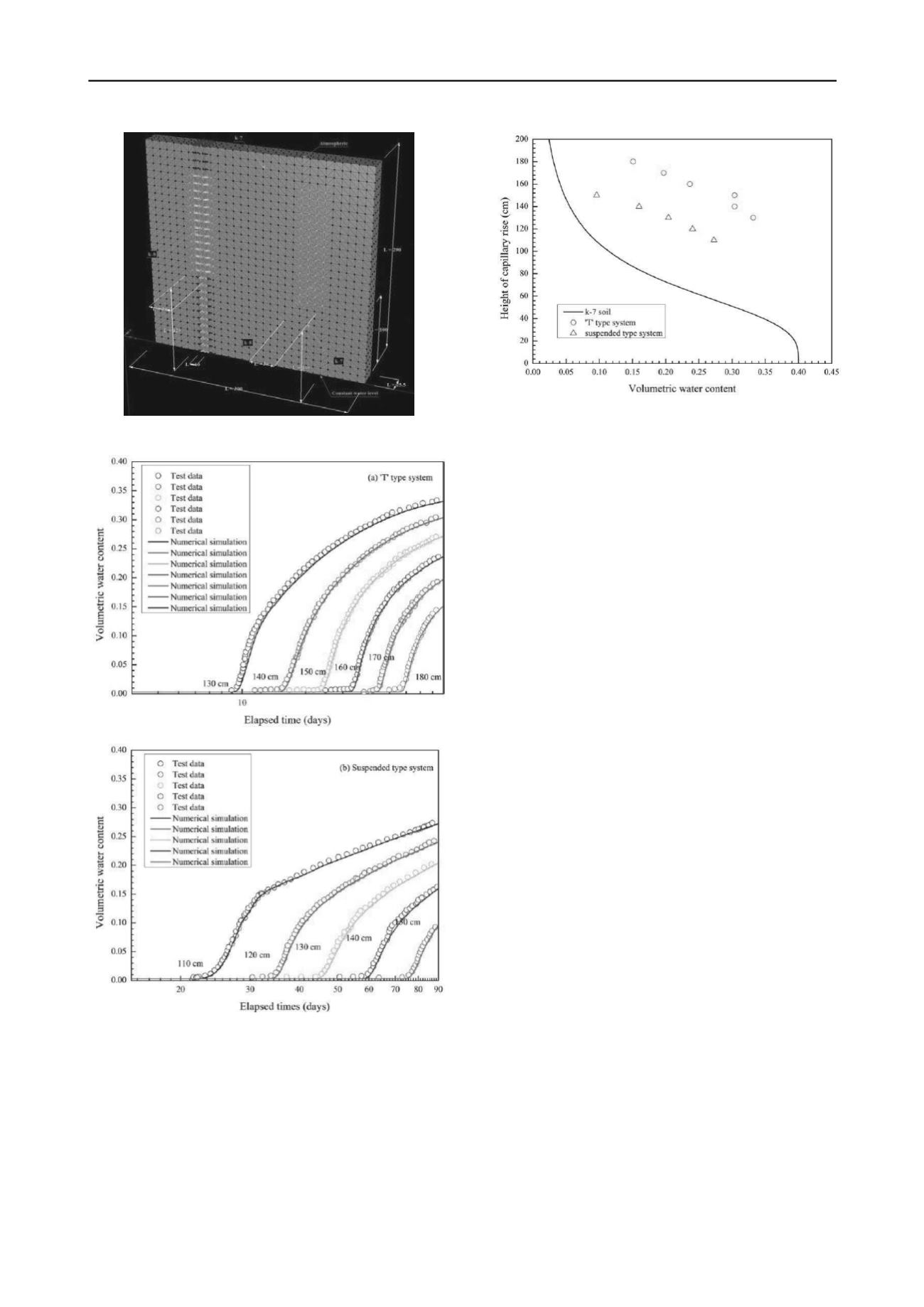
1136
Proceedings of the 18
th
International Conference on Soil Mechanics and Geotechnical Engineering, Paris 2013
Figure 9 Performance of the self-watering system
Figure 7 FEM mesh of the numerical model
4 CONCLUSIONS
In this paper, the self-watering system has been proposed. The
design methodology has also been given out. Based on the
verification of the system, the conclusions can be drawn as
follows,
1) Based on the information of the follows, the soil water
retention curve and unsaturated hydraulic conductivity of sandy
ground, the maximum influence depth of evaporation, the target
planting density and effective depth of roots of the plants, the
monthly quantity of evaporation, transpiration, capillary water
and irrigation, the self-watering system can be designed.
2) The self-watering system works under the condition of no
extra energy input. Even though, the system can raise the
ground water up to the certain depth of the unsaturated sandy
ground. The system can absorb and store some quantity of
water. The system can minimize the quantity of evaporation of
the water in the system.
3) Numerical method is proven to be a useful tool to predict
the unsaturated water flow within the system.
4) Both the two types of the self-watering system can fulfill
the requirement of designed functions. However, in the case
study, the efficiency of water supply of ‘T’ type system is
higher than that of the suspended type system. Because the
pillar part in the ‘T’ type system has higher efficiency of
absorbing water. It can be predicted that when the critical height
of the suspended system decreases, the opposite tendency will
occurs.
Figure 8 Comparison between test results and numerical results. (a) ‘T’
type system. (b) Suspended type system.
5 ACKNOWLEDGEMENTS
This research was supported in part by joint project between
Kyushu University, Fukuoka and Genkai town, Saga prefecture,
on cultivation of medical plant in arid ground, and Grant-in Aid
for scientific research (A) No. 22246064, from Japan Society
for the Promotion of Science (JSPS). The authors acknowledge
the supports.
Figure 9 shows the performance of the self-watering system.
First of all, it is easily to be observed that both ‘T’ type system
and suspended type system have larger storage capacity than the
original sandy ground (k-7 soil). Secondly, the height of
capillary rise of ‘T’ type system is higher than that of the
suspended type system. At the same height, the volumetric
water content of ‘T’ type system is larger than that of the
suspended type system. These indicate that the rate of water
supply of ‘T’ type system is quicker than that of the suspended
type system.
6 REFERENCES
Richards L.A. and Weaver L.R. 1944. Moisture retention by some
irrigated soils as related to soil moisture tension. Journal of
Agricultural Research. 69(6), 215–235.
Q. Liu. 2011. Development and Evaluation of Self-Watering System in
Unsaturated Arid Ground, PhD’s dissertation, Kyushu University.
UNCCD, United Nations Convention to Combat Desertification. 1994.


